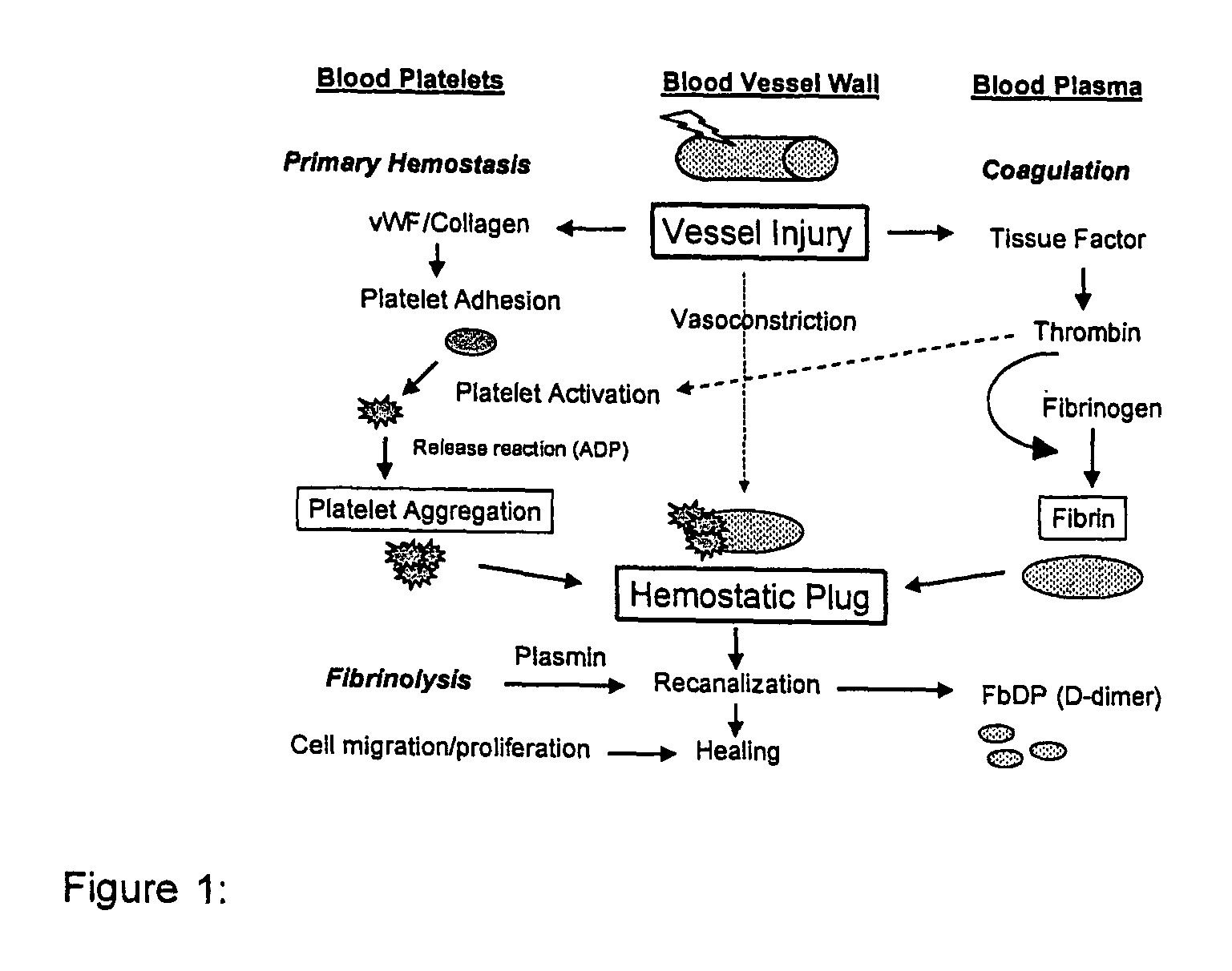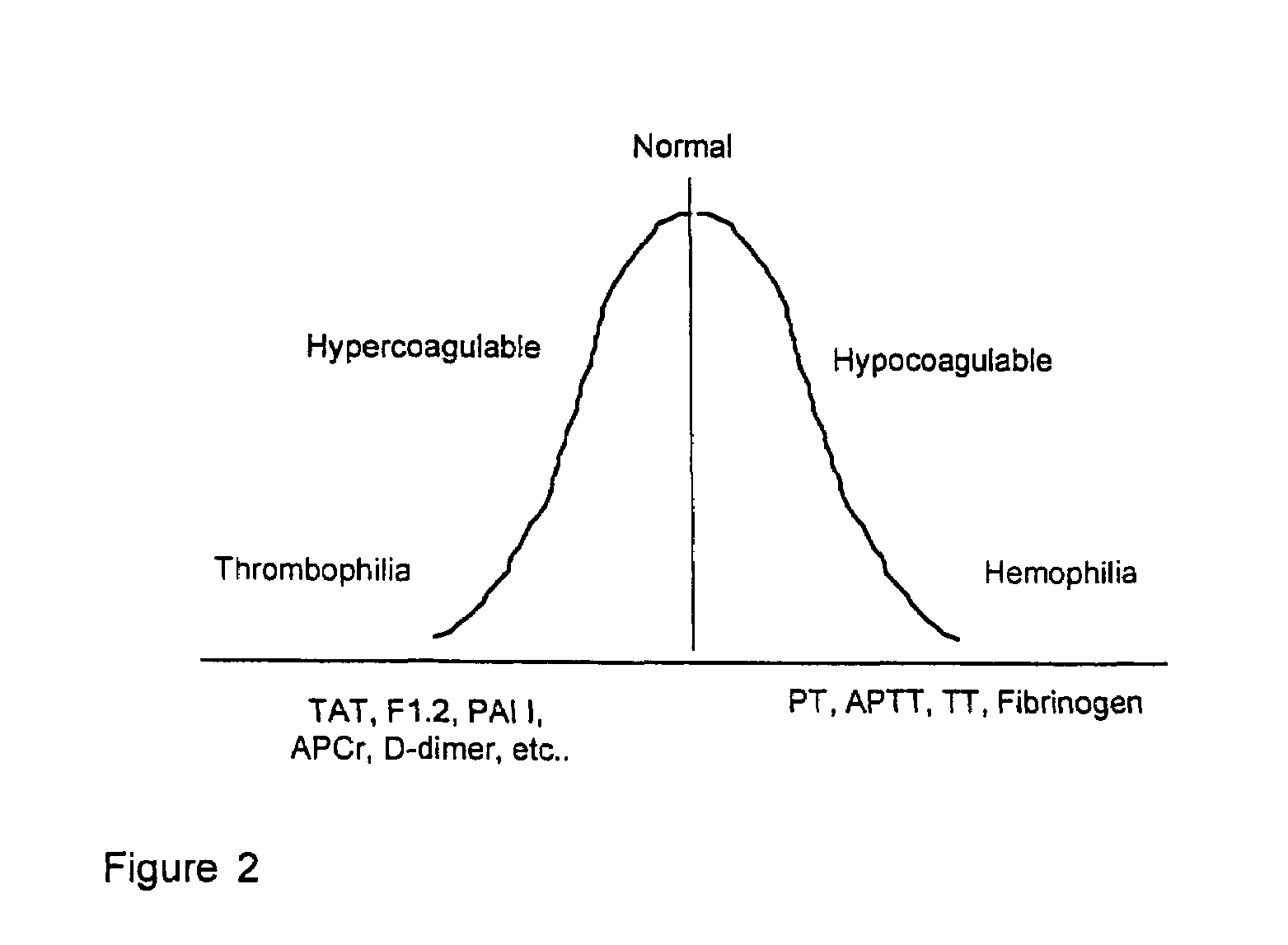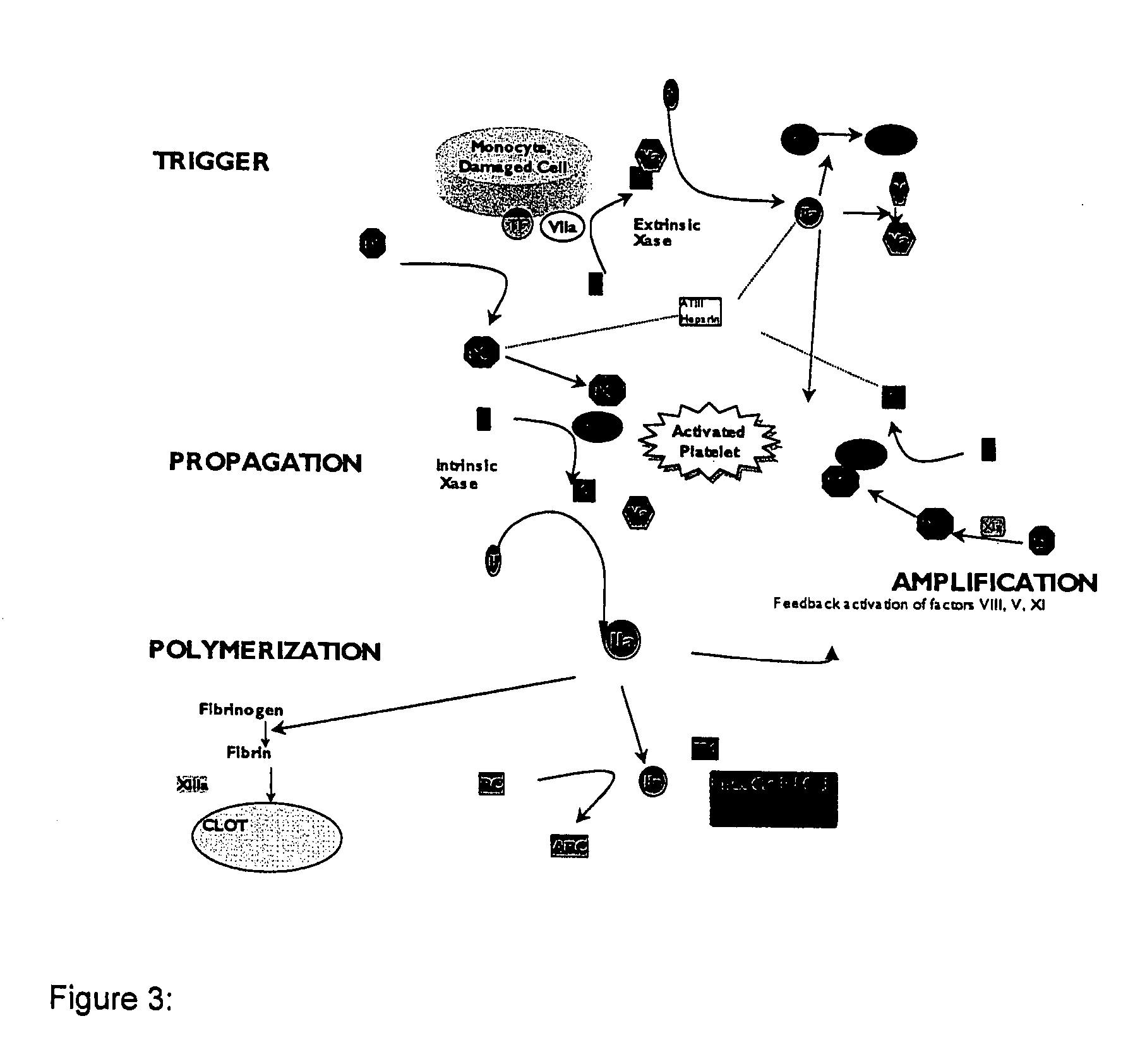Method for assessing coagulation
a coagulation and method technology, applied in the field of coagulation method, to achieve the effect of accurate and convenient us
- Summary
- Abstract
- Description
- Claims
- Application Information
AI Technical Summary
Benefits of technology
Problems solved by technology
Method used
Image
Examples
example 1
[0104]The assay was conducted by adding 50 uL of plasma to 50 uL of the activator and then adding 50 uL of the start reagent. A normal sample, a hypocoagulable sample (Factor VIII deficient plasma) and a hypercoagulable plasma (protein S deficient plasma) were evaluated at various dilutions of the activator. The activator was a commercially available thromboplastin (Thromborel R, Behring Diagnostics) diluted with a buffer at two dilutions, a 1:100 and 1:50000 of its original concentration. The start reagent consisted of 0.25 M Calcium Chloride. The assay was conducted at 37 C and the reaction was monitored at 580 nm for 300 seconds. Endpoints were calculated for time and rate indices of clot formation. Ratios of the endpoints were compared to other dilutions and other samples as follows:
[0105]Ratio=endpointofreagentdiln(x)forSpecimen / endpointofreagentdiln(y)forspecimenendpointofreagentdiln(x)fornpp / endpointofreagentdiln(y)fornpp
[0106]...
example ii
[0108]The assay was conducted by adding 50 uL of plasma to 50 uL of the activator and then adding 50 uL of the start reagent. A set of normal samples, a series of samples from hypocoagulable individuals and a series of plasmas from hypercoagulable individuals were evaluated at various dilutions of the activator. The activator was a preparation of TF reconstituted with phospholipids to between 20 to 3.3 pM (1:20,000 to 1:120,000 dilution) and phospholipid prepared by extrusion with and without TM. The start reagent consisted of 0.025 M Calcium Chloride. The assay was conducted at 37 C and the reaction was monitored at 580 nm for 300 seconds. The value of the minimum of the 1st derivative and the value of the minimum of the 2nd derivative were calculated for all samples. Ratios of the endpoints were compared to other dilutions and other samples as follows:
[0109]Option 1—Endpoint(s)
[0110]Option 2—Ratio at different dilutions (ratio 1)
[0111]Endpoint(z)fordilution(x)Endpoint(z)...
PUM
| Property | Measurement | Unit |
|---|---|---|
| time | aaaaa | aaaaa |
| time- | aaaaa | aaaaa |
| concentration | aaaaa | aaaaa |
Abstract
Description
Claims
Application Information
 Login to view more
Login to view more - R&D Engineer
- R&D Manager
- IP Professional
- Industry Leading Data Capabilities
- Powerful AI technology
- Patent DNA Extraction
Browse by: Latest US Patents, China's latest patents, Technical Efficacy Thesaurus, Application Domain, Technology Topic.
© 2024 PatSnap. All rights reserved.Legal|Privacy policy|Modern Slavery Act Transparency Statement|Sitemap



